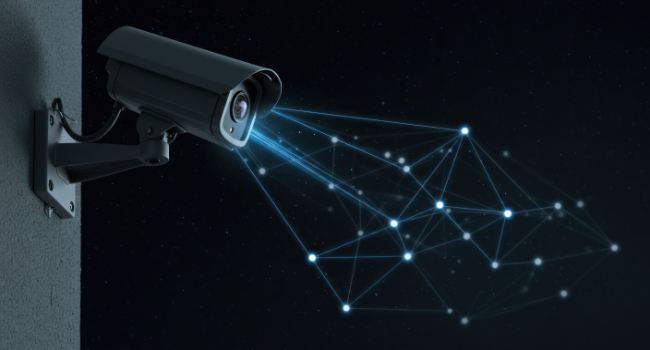
Accelerating a Pathway
- By Sharad Shekhar
- Jul 31, 2025
There is a new trend touting the transformational qualities of AI’s ability to deliver actionable data and predictive analysis that in many instances, seems to be a bit of an overpromise. The reality is that very few solutions in the cyber-physical security (CPS) space live up to this high expectation with the one exception being the new generation of Physical Identity and Access Management (PIAM) software – herein recategorized as PIAM+.
Next generation PIAM+ software provides a new security ecosphere – beyond just accurate and seamless identity management for physical access – that aggregates data from an expanded suite of applications to deliver true predictive analysis. PIAM+ combines physical identity and access management (traditional PIAM) with visitor identity management (VIM), incident/ticketing management, and asset lifecycle management.
This powerful multi-tiered solution redefines and elevates siloed identity and access management for enterprise level applications by providing integrated applications for enterprise-wide event analysis. Here’s how it works.
Physical identity lifecycle management. Today’s facilities accommodate people, data, critical assets and intellectual property. Security is no longer just about managing entry/egress operations, it is about knowing exactly who is gaining access and why they are there. Physical identity lifecycle access management fulfills this need using AI-driven authentication and real time security tracking to ensure access is dynamic, adaptive and accountable.
Access permissions to enter facilities and secured areas within facilities are automatically managed based on individual user profiles, compliance permissions, schedules, and security levels. This eliminates manual intervention, greatly reducing the risk of unauthorized access while documenting all activities for analysis.
Aside from ensuring optimal identity accuracy and security, PIAM captures all the data points related to an individual’s access activity to detect anomalous behavior for further investigation and data correlation, which PIAM+ now performs autonomously.
Visitor identity management. Next generation PIAM+ embodies comprehensive visitor management operations, eliminating the common delays and inconvenience of legacy visitor management software, adding additional data points for predictive analysis. New PIAM+ driven visitor management allows visitors to seamlessly check in, have their identities verified, and access the specific areas they have been granted permissions to enter —all while safeguarding sensitive company data and facilities.
This is most useful in venues that use contracted workers and have high visitor traffic such as airports, higher education campuses, government sites and hospitals. All spaces that need to facilitate secure movement. Next generation PIAM+ VIM optimizes workflows, improves efficiency and reduces security risks while contributing new data points for analysis and threat detection.
Incident management. Identity management and incident management need to be closely aligned. New PIAM+ solutions help organizations better prepare for known and emerging security threats and incidents by incorporating incident management functionality. Threats can range from unauthorized access and theft to natural disasters, hazmat spills or even acts of violence.
Without a fully integrated PIAM+ incident management solution in place, organizations can help prevent and mitigate risks and liabilities, including financial losses, reputational damage, and most importantly, physical harm to individuals.
PIAM+ incident management solutions use AI driven monitoring, automated response protocols and predictive analytics to detect anomalies before they escalate. By seamlessly aggregating data from events, PIAM+ incident management applications can help identify potential indicators of impending incidents based on historical data and its correlation to real time identity and asset management data.
When an incident triggers alerts, PIAM+ solutions empower your workforce to communicate effectively while determining the nature of the incident and its impact across identities, locations and assets. Every incident gets ticketed and routed with automated generated remediation suggestions accessible through dedicated risk-focused dashboards.
By detecting threats early, responding swiftly, and continuously improving security measures, organizations can better protect their people and assets from harm.
Asset lifecycle management. Today’s mid-to-large-sized facilities house thousands, if not millions of dollars of equipment and software essential to daily operations. Controlling and managing the location and maintenance of all these assets is nearly impossible for even large organizations with advanced infrastructure and reporting.
New next generation PIAM+ asset management capabilities provide a pragmatic and cost-effective solution. RFID tracking, predictive maintenance and automated auditing ensures that every piece of infrastructure – computers, machines, tools, technology… are fully accounted for and optimized. This allows organizations to monitor and track critical (if not all) their physical assets in real time. Having a fully integrated PIAM-driven asset management solution with VIM and incident management provides another milestone in operational efficiency, auditing and compliance, preventive maintenance, loss reduction and theft prevention.
PIAM+ Makes Predictive Analysis a Reality
The value proposition for next generation PIAM+ is simple – combine mission critical operations on a single pane of glass platform to transform traditional security and business operations from being responsive to predictive. A new powerful, fully integrated enterprise-level solution offering superior performance and future-proof architecture, next generation PIAM+ delivers all this and more.
This article originally appeared in the July / August 2025 issue of Security Today.